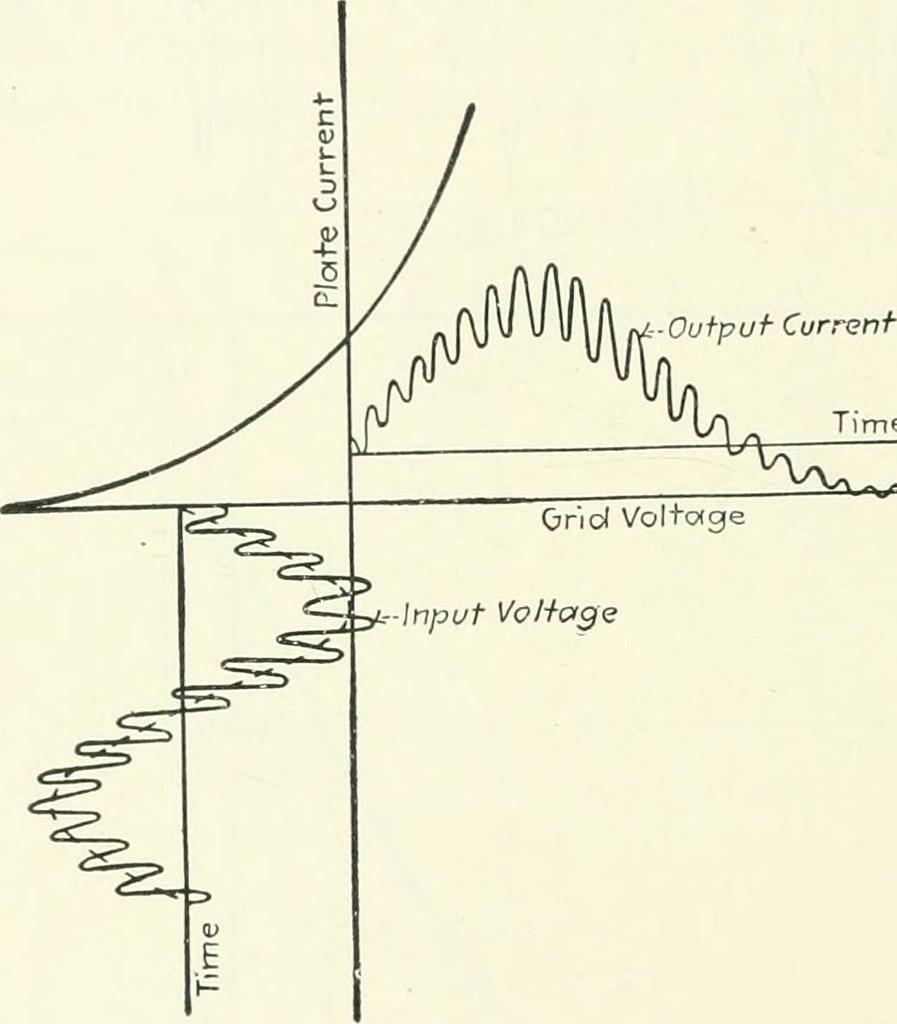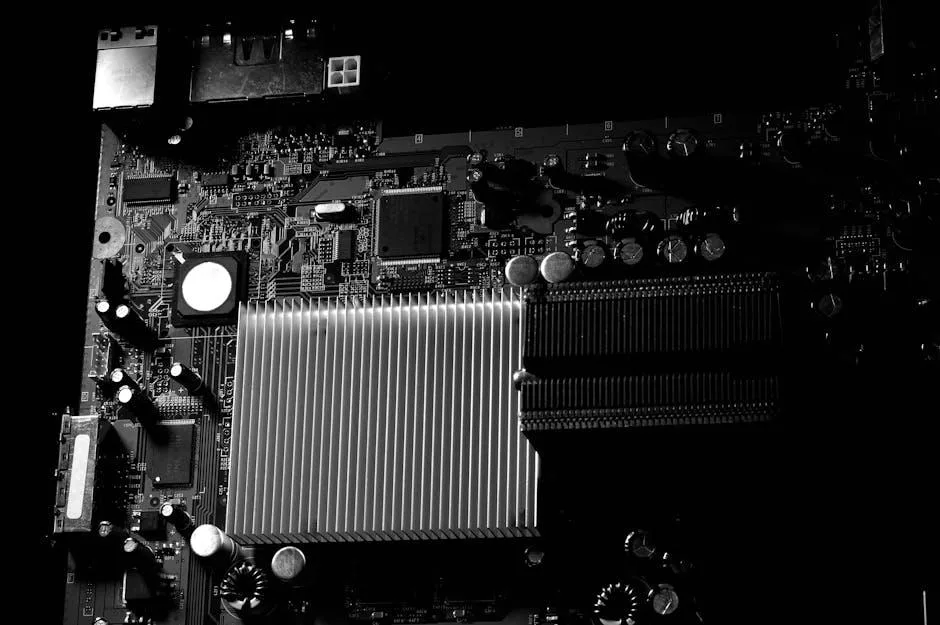This website may contain affiliate links, which means I may receive a commission if you click on a link and make a purchase. While clicking on these links won't cost you any extra money, they will help me keep this site up and running. Your support is appreciated!
Are you ready to geek out over some cutting-edge computer tech? Well, get ready to dive into the world of RAM as we explore the differences between DDR4 and DDR5. From blazing fast speeds to improved energy efficiency, these two types of RAM are revolutionizing the way we experience computing power. So, grab your thinking caps and get ready to uncover the magic behind DDR4 and DDR5 RAM.
Table of Contents
- Unveiling the Secret of Speed: DDR4 and DDR5 Face Off
- Capacity Crunch: How DDR5 Amps Up Your Storage Game
- Power Play: The Energy Efficiency Battle Between DDR4 and DDR5
- Timing is Everything: Latency Differences Deciphered
- Forward Compatibility Chronicles: Prepping for the Future with DDR5
- Bandwidth Bonanza: Exploring DDR5’s Data Transfer Leap
- Price Point Pondering: Is DDR5 Worth Your Wallet’s Attention?
- Voltage Variations: A Peek into DDR4 and DDR5 Power Needs
- Stability Saga: Reliability and Error Correction in the Limelight
- Chipset Chatter: Motherboard Matchups for DDR4 and DDR5 Compatibility
- Questions & Answers for DDR4 vs DDR5 RAM: What’s the Difference
- Closing Remarks
Unveiling the Secret of Speed: DDR4 and DDR5 Face Off
When it comes to system memory, DDR4 and DDR5 are the current dominant technologies in the market. Both offer significant improvements over their predecessors, but how do they compare to each other? Let’s take a closer look and unveil the secrets of speed in the DDR4 vs. DDR5 RAM face off.
One of the most notable differences between DDR4 and DDR5 RAM is the speed. DDR5 offers significantly faster data transfer rates compared to DDR4, making it an attractive option for those seeking higher performance. While DDR4 typically has a maximum speed of 3200-4800 MT/s, DDR5 can reach speeds of up to 8400 MT/s. This means that DDR5 RAM can handle data more quickly and efficiently, resulting in smoother multitasking and faster load times.
In addition to speed, DDR5 also offers improved power efficiency. By using on-die voltage regulation, DDR5 RAM can operate at a lower voltage, which can result in reduced power consumption compared to DDR4. This not only leads to lower energy costs but also contributes to a more eco-friendly computing experience.
Another key difference between DDR4 and DDR5 is the capacity. DDR5 supports higher maximum capacities compared to DDR4, which can be particularly beneficial for applications requiring large amounts of memory, such as server workloads or high-performance computing. While DDR4 typically supports up to 64GB per module, DDR5 has the potential to support up to 128GB per module, offering greater flexibility for memory-intensive tasks.
Capacity Crunch: How DDR5 Amps Up Your Storage Game
Do you find yourself constantly running out of storage space on your computer? If so, you’re not alone. With the increasing demand for higher capacity and faster performance, the need for advanced technology is more crucial than ever. This is where DDR5 RAM comes into play, promising to amp up your storage game and provide a solution to the capacity crunch. Let’s explore the differences between DDR4 and DDR5 RAM and how the latter is set to revolutionize the world of storage.
One of the key differences between DDR4 and DDR5 RAM is the increased capacity. DDR5 RAM offers significantly higher density compared to DDR4, allowing for larger memory modules and more storage. This means you can store more data and run more applications simultaneously without worrying about running out of memory.
In addition to increased capacity, DDR5 RAM also offers faster data transfer speeds. With transfer rates of up to 6400 MT/s, DDR5 RAM outperforms DDR4 in terms of speed, delivering smoother and more responsive performance. This is particularly beneficial for tasks that require high bandwidth, such as gaming, video editing, and data processing.
Another key advantage of DDR5 RAM is its improved power efficiency. DDR5 RAM operates at a lower voltage compared to DDR4, resulting in reduced power consumption and heat generation. This not only contributes to a more energy-efficient system but also extends the lifespan of your hardware.
With the promising advancements in capacity, speed, and power efficiency, it’s clear that DDR5 RAM has the potential to revolutionize the way we store and access data. As technology continues to evolve, embracing DDR5 RAM could be the key to unlocking a more efficient and seamless computing experience. Whether you’re a tech enthusiast or a casual user, keeping an eye on DDR5 RAM developments could be the game-changer you’ve been waiting for.
Power Play: The Energy Efficiency Battle Between DDR4 and DDR5
The battle between DDR4 and DDR5 RAM is heating up as the demand for energy-efficient memory solutions continues to grow. When it comes to power play, understanding the key differences between DDR4 and DDR5 is crucial for making informed decisions on which RAM technology is best suited for your specific needs.
One of the primary differences between DDR4 and DDR5 RAM lies in their power consumption. DDR5 RAM is designed to be more energy-efficient than its predecessor, DDR4, offering improved power efficiency and lower voltage requirements. This means that DDR5 RAM can deliver the same level of performance as DDR4 while consuming less power, making it a more environmentally friendly and cost-effective option in the long run.
In addition to its energy efficiency, DDR5 RAM also boasts higher data transfer rates compared to DDR4. With faster speeds and increased bandwidth, DDR5 is able to handle more data at once, resulting in improved overall system performance and responsiveness. This is particularly beneficial for gaming, content creation, and other demanding tasks that require high-speed data processing.
Another key advantage of DDR5 over DDR4 is its improved reliability and scalability. DDR5 RAM is designed to support higher memory capacities and densities, making it more suitable for advanced computing applications and future-proofing your system for upcoming technologies. This makes DDR5 a better choice for users who are looking to build a system that can handle the demands of tomorrow’s software and hardware innovations.
Overall, while DDR4 RAM still has its place in the market, DDR5’s energy efficiency, faster data transfer rates, and enhanced scalability make it a compelling choice for users who are looking to maximize performance and minimize power consumption in their systems. Whether you’re a gaming enthusiast, content creator, or professional looking for a reliable and high-performance memory solution, DDR5 RAM provides a power play advantage that can’t be ignored.
With the ongoing battle between DDR4 and DDR5 RAM, it’s clear that the future of memory technology is heading towards a more energy-efficient and high-performing direction with DDR5 leading the charge.
Timing is Everything: Latency Differences Deciphered

When it comes to discussing the differences between DDR4 and DDR5 RAM, one of the crucial factors to consider is the latency differences. Latency, or the time it takes for data to be accessed and transferred, can have a significant impact on the overall performance of your system. Let’s dive into the specifics of how DDR4 and DDR5 RAM differ when it comes to latency.
DDR4 RAM typically has higher latency compared to DDR5 RAM. This means that DDR4 RAM takes longer to access and transfer data, resulting in slightly slower performance. On the other hand, DDR5 RAM boasts lower latency, allowing for faster data access and transfer speeds. This can have a noticeable impact on tasks that require a high level of memory bandwidth, such as gaming, video editing, and 3D rendering.
One of the key factors contributing to the lower latency of DDR5 RAM is its increased data rate. DDR5 RAM operates at higher speeds compared to DDR4, resulting in improved overall performance. Additionally, DDR5 RAM features a more advanced architecture, allowing for more efficient data access and transfer, further reducing latency.
In summary, when comparing DDR4 vs. DDR5 RAM, it’s important to consider the latency differences. DDR5 RAM offers lower latency and faster data access and transfer speeds compared to DDR4, thanks to its higher data rate and more advanced architecture. This can make a significant difference in performance, especially for tasks that require a high level of memory bandwidth.
Forward Compatibility Chronicles: Prepping for the Future with DDR5
When it comes to prepping for the future with DDR5 RAM, it’s important to understand the key differences between DDR4 and DDR5. DDR4 has been the standard for several years now, but DDR5 is on the horizon and promises significant improvements in speed, bandwidth, and efficiency. Let’s dive into the differences between the two to better understand how DDR5 is shaping the future of memory technology.
Speed: DDR5 offers faster data transfer rates than DDR4, with speeds of up to 6400 MT/s compared to DDR4’s maximum of 3200 MT/s. This means that DDR5 RAM can process data at double the speed of DDR4, resulting in improved performance for demanding applications and multitasking.
Bandwidth: DDR5 also boasts higher bandwidth compared to DDR4, providing more headroom for data-intensive tasks. With up to 51.2 GB/s of bandwidth per module, DDR5 can handle larger data loads with ease, making it ideal for high-performance computing and gaming.
One of the key advantages of DDR5 is its improved power efficiency. By reducing the operating voltage to 1.1V, DDR5 RAM consumes less power compared to DDR4, resulting in lower energy consumption and heat generation. This not only benefits the environment but also contributes to longer battery life for mobile devices and laptops.
In terms of compatibility, DDR5 is designed to be forward-compatible with future hardware, making it a smart investment for those looking to future-proof their systems. While DDR4 will still be relevant for the foreseeable future, DDR5 offers a more robust foundation for upcoming technologies and advancements in memory and computing. As DDR5 becomes more widely available, it will likely become the new standard for next-generation systems and enthusiasts looking for the latest in memory technology.
Bandwidth Bonanza: Exploring DDR5’s Data Transfer Leap

When it comes to comparing DDR4 vs DDR5 RAM, one of the most significant differences lies in the data transfer speed. DDR5 RAM offers a substantial leap in data transfer rates, making it an attractive option for those seeking high-performance computing solutions.
One of the key factors contributing to the increased data transfer capabilities of DDR5 RAM is its higher bandwidth. DDR5 RAM boasts a significant increase in bandwidth compared to its predecessor, DDR4. This means that DDR5 RAM can handle a larger volume of data at a faster rate, resulting in improved overall system performance.
In addition to higher bandwidth, DDR5 RAM also introduces improved efficiency and power management features. The introduction of on-die voltage regulation and decision feedback equalization (DFE) further enhances the data transfer capabilities of DDR5 RAM, making it a compelling option for those seeking energy-efficient solutions without sacrificing performance.
In summary, when comparing DDR4 vs DDR5 RAM, the data transfer leap offered by DDR5 is a game-changer. With higher bandwidth, improved efficiency, and enhanced power management features, DDR5 RAM sets a new standard for high-performance computing. Whether you’re a gaming enthusiast, content creator, or professional in need of reliable computing power, DDR5 RAM is a worthy investment for those seeking top-tier performance.
Price Point Pondering: Is DDR5 Worth Your Wallet’s Attention?
Are you considering upgrading your RAM but feeling unsure about whether to invest in DDR5? Let’s take a closer look at the price point of DDR5 and whether it’s worth your wallet’s attention.
First, let’s talk about the key differences between DDR4 and DDR5 RAM to understand what makes DDR5 stand out:
- DDR4 operates at a voltage of 1.2V, while DDR5 operates at a lower voltage of 1.1V, which means DDR5 can potentially provide energy savings.
- DDR5 offers higher memory density, which means it can support larger modules and ultimately provide better performance.
- The transfer rate for DDR5 can reach up to 6400 MT/s, a significant increase from the maximum transfer rate of 3200 MT/s for DDR4, leading to faster data transfer and improved overall system performance.
While these advancements may sound appealing, it’s important to consider the cost implications. DDR5 RAM modules can be more expensive than their DDR4 counterparts, and this price difference may not justify the performance boost for everyone.
The decision to invest in DDR5 RAM ultimately depends on your specific needs and budget. If you’re a performance-driven user who values cutting-edge technology and doesn’t mind spending a little extra for the latest advancements, DDR5 may be worth considering.
However, if you’re looking for a more budget-friendly option and don’t necessarily require the highest performance available, DDR4 could still provide a solid and reliable choice for your system.
So, when pondering whether DDR5 is worth your wallet’s attention, consider your priorities and budget carefully before making a decision.
Voltage Variations: A Peek into DDR4 and DDR5 Power Needs

When it comes to the power needs of DDR4 vs. DDR5 RAM, there are some key differences to be aware of. DDR4 RAM operates at a voltage of 1.2V, while DDR5 RAM requires a lower voltage of 1.1V. This may seem like a small difference, but it can have a significant impact on the overall power efficiency of the system.
The lower voltage requirement of DDR5 RAM means that it consumes less power than DDR4 RAM, making it more energy-efficient. This is an important consideration for those looking to build a system with minimal environmental impact, as well as for those who are conscious of their energy consumption and utility bills. In addition to being more energy-efficient, the lower voltage of DDR5 RAM can also contribute to improved thermal performance, as it generates less heat during operation.
In terms of power needs, it’s clear that DDR5 RAM has a distinct advantage over DDR4 RAM. The lower voltage requirement not only makes it more energy-efficient, but also contributes to improved thermal performance. As DDR5 RAM becomes more widely available, it’s likely that we’ll see a shift towards this more advanced and efficient technology in the coming years. With the potential to reduce energy consumption and improve overall system performance, DDR5 RAM is certainly an exciting development in the world of computer hardware.
As we continue to see advancements in technology, it’s important to consider the environmental and efficiency implications of these changes. DDR5 RAM offers a clear advantage in terms of power needs, making it a compelling choice for those looking to build a more energy-efficient and high-performing system.
Stability Saga: Reliability and Error Correction in the Limelight

When it comes to DDR4 vs. DDR5 RAM, the difference lies in their performance and capabilities. DDR4 RAM has been the standard for several years, but DDR5 RAM is now making its way into the spotlight with its enhanced features.
Let’s explore the key disparities between the two to see how they stack up against each other.
DDR4 RAM operates at lower speeds compared to DDR5 RAM, which means it has slower data transfer rates. On the other hand, DDR5 RAM offers higher frequencies, resulting in faster performance and improved multitasking capabilities. This makes DDR5 a favorable choice for gaming, content creation, and other demanding tasks.
When it comes to power consumption, DDR5 RAM is more energy efficient than DDR4 RAM. It operates at a lower voltage, which can lead to improved battery life in devices such as laptops and smartphones. Additionally, DDR5 RAM supports on-die ECC (Error-Correcting Code) for improved reliability and data integrity.
Another notable difference between DDR4 and DDR5 RAM is the capacity. DDR5 RAM has the potential to support higher capacities, allowing for greater memory expansion and future-proofing your system. This makes DDR5 a more attractive option for users looking to invest in long-term performance and scalability.
The choice between DDR4 vs. DDR5 RAM ultimately depends on your specific needs and budget. While DDR5 offers superior performance, energy efficiency, and future-proofing capabilities, DDR4 remains a reliable and cost-effective option for many users. It’s essential to weigh the pros and cons of each RAM type to make an informed decision based on your individual requirements.
Chipset Chatter: Motherboard Matchups for DDR4 and DDR5 Compatibility

With the arrival of DDR5 RAM, it’s essential to understand the differences and compatibility with motherboards using DDR4.
Let’s dive into the chipset chatter and intricate matchups for DDR4 and DDR5 compatibility.
The primary difference between DDR4 and DDR5 RAM lies in the technology used to create them. DDR4 RAM has been the prevalent standard for several years, and DDR5 RAM is the latest advancement. DDR4 operates at a lower maximum data rate compared to DDR5 and requires a lower voltage, making it more energy-efficient. On the other hand, DDR5 RAM offers higher maximum data rates and increased bandwidth, paving the way for improved performance and efficiency.
When considering motherboard matchups for DDR4 and DDR5 compatibility, it’s crucial to examine the chipset’s capability to support either type of RAM. Motherboards designed to accommodate DDR4 RAM will not be compatible with DDR5 RAM, and vice versa. It’s essential to check the specifications of your motherboard and ensure it supports the type of RAM you intend to use.
Here are a few key factors to consider when comparing DDR4 and DDR5 compatibility for motherboards:
- DDR4 motherboards are not compatible with DDR5 RAM due to differences in the technology and voltage requirements.
- DDR5 motherboards offer increased bandwidth and higher data rates, providing improved performance compared to DDR4 motherboards.
- Upgrading to a DDR5 motherboard may require upgrading other components as well, such as the processor and graphics card, to fully leverage the benefits of DDR5 RAM.
As technology continues to advance, the transition from DDR4 to DDR5 RAM is inevitable. While DDR4 RAM still holds its ground, DDR5’s enhanced performance and efficiency make it an appealing option for those looking to elevate their system’s capabilities. When considering motherboard matchups for DDR4 and DDR5 compatibility, it’s essential to assess your current setup and future needs to make an informed decision on which RAM type and motherboard to invest in.
Questions & Answers for DDR4 vs DDR5 RAM: What’s the Difference
What is the main difference between DDR4 and DDR5 RAM?
DDR4 RAM is the current standard for most computers, while DDR5 RAM is the next generation of memory technology, offering faster speeds and increased efficiency.
How much faster is DDR5 compared to DDR4 RAM?
DDR5 RAM has the potential to be up to twice as fast as DDR4 RAM, with speeds reaching up to 8400 MT/s compared to DDR4’s maximum speed of 4266 MT/s.
Will DDR5 RAM be compatible with current motherboards?
No, DDR5 RAM requires a new motherboard with a compatible chipset in order to take advantage of its improved performance and features.
What are the benefits of upgrading to DDR5 RAM?
Upgrading to DDR5 RAM can result in faster data transfer speeds, improved multitasking performance, and better power efficiency, leading to overall smoother and more responsive system performance.
Is DDR5 RAM more expensive than DDR4?
Initially, DDR5 RAM may be more expensive due to its newness and higher performance capabilities. Over time, as DDR5 becomes more widespread, prices are likely to become more affordable.
Can DDR4 and DDR5 RAM be used together in the same system?
No, DDR4 and DDR5 RAM are not compatible with each other due to their different pin configurations and voltage requirements.
Will upgrading to DDR5 RAM significantly improve gaming performance?
For gaming, DDR5 RAM has the potential to offer noticeable improvements in load times, frame rates, and overall gameplay smoothness, especially in demanding and graphics-intensive titles.
How does DDR5 RAM improve power efficiency?
DDR5 RAM utilizes a lower voltage compared to DDR4, which can lead to reduced power consumption and heat generation, contributing to better energy efficiency and potentially longer battery life in laptops.
When can we expect DDR5 RAM to become widely available?
DDR5 RAM has already started to become available on the market, and as demand increases and production ramps up, it is expected to become more widely accessible in the near future.
Is it worth waiting for DDR5 RAM before building a new PC?
If you’re planning to build a new PC in the near future, it might be worth waiting for DDR5 RAM to become more widely available, especially if you want to future-proof your system and take advantage of the latest memory technology.
Closing Remarks
So there you have it—when it comes to DDR4 vs DDR5 RAM, there are certainly some differences to consider. From performance improvements to power efficiency, the latest iteration of DDR5 RAM is poised to take over the market in the coming years. However, DDR4 still remains a reliable and cost-effective option, especially for those on a budget. No matter which RAM you choose, understanding the nuances between the two will help you make the best decision for your computing needs.




